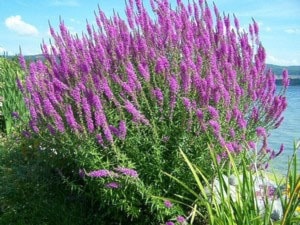Spring has sprung and green thumbs everywhere are itching to find those perfect specimens for their landscapes.
But the evolving ‘enviro-conscience’ meter in most gardeners may be signaling a pause for thought. Many of us have come to realize that earth’s resources are finite after all. Conserving those resources for our grandkids and their grandkids is everybody’s job. Sustainable, well-balanced ecosystems that last and evolve begin with choosing well what we grow and cultivate in our gardens and landscapes now.
‘Indigenous’ is the key. By definition this lovely word (which includes the word ‘dig’) describes plants that are “an integral part of an ecosystem, fully adapted to climatic conditions, soil composition….. having symbiotic relationships with other species in the same locales.” That relationship means native plants are vital food and shelter for native wildlife of all kinds, including fish, birds and bees. Do we want to lose that connection and rob those who follow us?
To that end, we have to learn more about the most common ‘Invasive Species’ in our local environments and choose some healthier alternatives. Granted, introduced and foreign plants can be very attractive specimens. Often, however, they come from harsher soil and weather conditions that control their growth. Here, they adjust quickly to the lusher living in our more temperate zones and multiply rapidly by rootlets or by seed “explosions” carried by birds and nearby waterways. They thrive, quickly becoming invasive pests. Invasives grow and spread so rapidly they shade out native species and strip the soil of mineral nutrients. This causes erosion in the wet seasons and fire hazards when it’s dry. Some contain toxic chemical compounds that threaten people, pets and wildlife. In any case, attempts to control invasives safely become expensive, frustrating and largely ineffective.
In November 2012, the Bertrand Creek Enhancement Society sent a letter to the Township of Langley Mayor and Council concerning invasive plants in our watershed – specifically three particular species named tansy ragwort, Japanese knotweed and Himalayan balsam. Tansy is toxic to farm animals like cows and horses; Himalayan Balsam shades out native fruit-bearing shrubs and leaves stream-banks open to erosion; and the roots of Japanese knotweed crumble expensive infrastructure like sidewalks, bridge supports, building foundations and drainage mains.
Other ubiquitous invasives like ivy, purple loosestrife, reed canary grass, morning glory and deadly nightshade cause similar destruction. They can strangulate mature trees, take over wetlands and displace native species, plug drains, overwhelm man-made structures and poison livestock and children.
Thankfully, there are many equally lovely and useful native plants in B.C. These provide good habitat value, are often evergreen and can be vigorous ground covers. Many are well-adapted to wet conditions yet thrive in heat, grow well in shade and under trees, protect steep slopes from eroding and tolerate foot traffic. Just a few native plants that have these qualities and provide good habitat for birds, pollinators and native fur-bearing creatures are: coral bells, foamflower, salal, wintergreen, bunchberry, western bleeding heart, sword fern, beach strawberry, lingonberry and kinnickinnick. Your local plant nursery can provide you with the biological names and growing requirements. The good news is they are all indigenous.
The Bertrand Creek Enhancement Society is a non-profit watershed stewardship group operating in Aldergrove. Meetings are held in the Aldergrove Community Secondary School library on the third Wednesday evening (7 p.m.) of each month. Our vision is to restore and revitalize Bertrand Creek as a harmonious corridor that connects wildlife habitat and healthy recreation in our community.
For more information, please call Lisa: 604-532-3517 or e-mail www.leps.bc.ca
